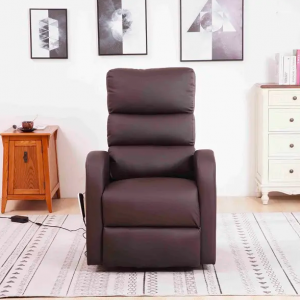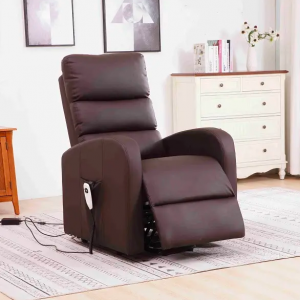Lift chairs have become extremely popular in recent years, providing a convenient and comfortable seating solution for people with limited mobility. These specialized chairs are designed to help users stand and sit, making daily activities easier. However, like any other product, lift chairs have their drawbacks. In this article, we’ll explore the pros and cons of lift chairs to help you make an informed decision.
Advantages of lift chairs:
1. Enhanced Mobility: The main advantage of lift chairs is that they provide better mobility. With the help of a lift chair, people with limited mobility or physical disabilities can easily transition from a sitting to a standing position without undue stress on the body. This increases independence and gives the user a sense of control.
2. Comfort and Convenience: Lift chairs are designed with ergonomic features to provide optimal comfort. They come with padding, lumbar support, and adjustable positions, allowing users to find the most comfortable sitting or reclining position. Additionally, lift chairs often include features such as heating and massage options to provide additional relaxation and therapeutic benefits.
3. Independence and Dignity: By reducing the need for assistance when rising and falling, lift chairs enable individuals to maintain their independence and dignity. Users can easily complete these tasks on their own rather than relying on help from others, thus cultivating a feeling of self-sufficiency.
4. Various styles: Lift chairs are available in a variety of styles and designs. Whether you prefer a classic or modern look, there's a lift chair to suit your aesthetic preferences and blend seamlessly with your home décor. Some manufacturers even offer customization options, allowing you to choose upholstery, colors, and other features that suit your tastes.
Disadvantages of lift chairs:
1. Cost: One of the significant disadvantages of chairlifts is their cost. Compared to traditional recliners, lift chairs tend to be more expensive due to their special features and motors. However, the long-term benefits and convenience they offer must be considered when evaluating the price.
2. Bulky: Lift chairs are typically larger and heavier than standard recliners, primarily due to the built-in lift mechanism. This bulkiness can present a challenge if you have limited space in your living area or move furniture around frequently.
3. Electricity Dependence: Lift chairs use motors that require electricity to operate. This means that during power outages or in areas with unreliable power supply, the functionality of the chairlift may be affected. However, many lift chairs come with a backup battery option, mitigating this disadvantage to an extent.
4. Limited Positions: While lift chairs offer a variety of recline positions, they may not offer the same range of adjustability as some high-end recliners. If you have specific positioning preferences, it is recommended to test the lift chair thoroughly before purchasing to ensure it meets your needs.
In summary, lift chairs offer many advantages that can greatly improve the quality of life for people with limited mobility. They offer enhanced mobility, comfort, independence and style. However, before investing in a lift chair, it is crucial to consider disadvantages such as cost, bulkiness, power dependence, and limited positioning. As with any major purchase, understanding the pros and cons of a lift chair will help you make an informed decision that suits your specific needs and situation.
Post time: Nov-21-2023



